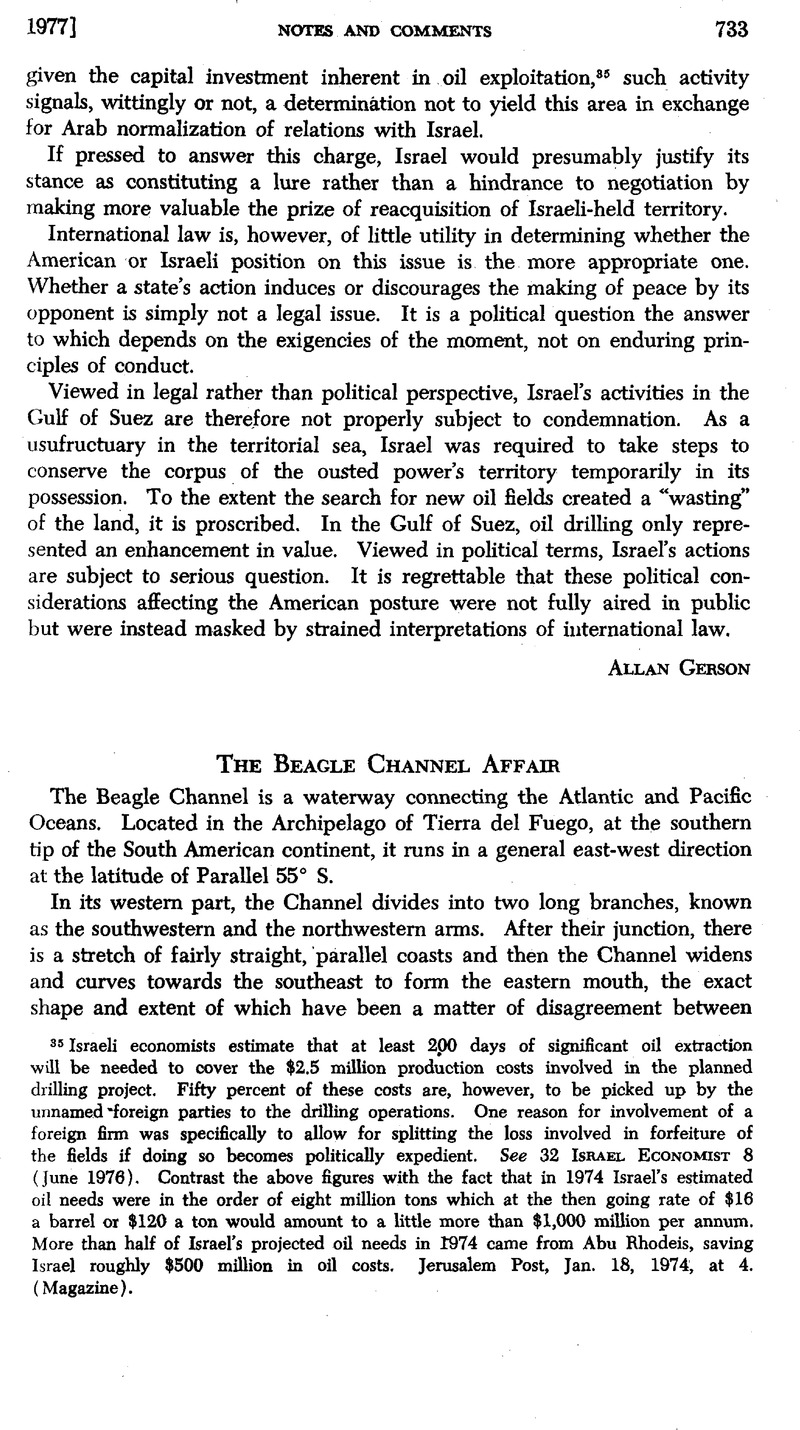No CrossRef data available.

1 Not more than 100 square kilometers each.
2 Between Argentina, Chile, and the United Kingdom, doneat London, July 22, 1971, 10 ILM 1182 (1971).
3 Treaty of Arbitration between Argentina and Chile, signedat Santiago, May 28, 1902, 35 Martens, Nouveau Recueil Général, 2d ser. 297 (1908).
4 The judges selected were: Hardy Dillard (U.S.A.), Sir Gerald Fitzmaurice (U.K.), AndréGros (France), Charles D. Onyeama (Nigeria), and Sture Petrén (Sweden). It has to be stressed that, although their personal qualifications were taken into account, their designation was primarily due to their membership on the ICJ.
5 The Chilean question must be read together with the Notes of December 11, 1967 which, in short, sought to establish a procedure against Argentina on the basis of Article V of the 1902 Treaty of Arbitration, i.e.,a procedure which empowered the Arbitrator to draft the Compromisowithout consulting the parties if the latter could not agree on a text (Art. IV of the abovementioned Treaty of 1902). On that occasion Argentina did not accept a procedure of arbitatration drawn on such a basis, and new negotiations were opened in 1970 which led to the present Compromiso.
6 Treaty of Delimitation, signedat Buenos Aires, July 23, 1881, 12 martens, nouveau recueil général, 2d ser. 491 (1887).
7 This meridian was changed to 68°38'5 as a consequence of the 1893 Additional and Explanatory Protocol to the 1881 Treaty.
8 The transcribed translation is an Argentine text. The Chilean version differed in some passages. The Spanish text is as follows: En la Tierra del Fuego se trazará un línea que, par tiendo del punto denominado Cabo del Espíritu Santo en la latitud 52°40', se prolongara hacia el Sur, coincidiendo con el meridiano occidental de Greenwich 68° 34’ hasta tocar en el canal “Beagle”. La Tierra del Fuego, dividida de esta manera, sera chilena en la parte occidental y argentina en la parte oriental. En cuanto a las islas, perteneceran a la República Argentina la Isla de los Estados, los islotes próximamente inmediatos a ésta y las demás islas que haya sobre el Atlantico al Oriente de la Tierra del Fuego y costas orientales de la Patagonia; y perteneceran a Chile todas las islas al Sur del canal “Beagle” hasta el Cabode Hornos y las que haya al occidente de al Tierra del Fuego.
9 In the Argentine contention, this principle was clearly expressed in the Additional and Explanatory Protocol, ratified by the Parties in 1893, in the following manner: … it being understood that, by the provisions of the same [1881] Treaty, the sovereignty of each State Over the respective coastline is absolute, in such a manner that Chile cannot lay claim to any point toward the Atlantic, just as the Argentine Republic can lay no claim to any toward the Pacific.
10 Taken from the “Report and Decision of the Court of Arbitration rendered to Her Britannic Majesty's Government in the United Kingdom” (hereinafter cited as Report).
11 See supra.
12 Report, supranote 10, at 94.
13 Id.77.
14 Id.248, Annex IV, “The Tracing of the Boundary line.“
15 Id.126.
16 Id.194.
17 Id.210.
18 Id.211.
19 Id.212.